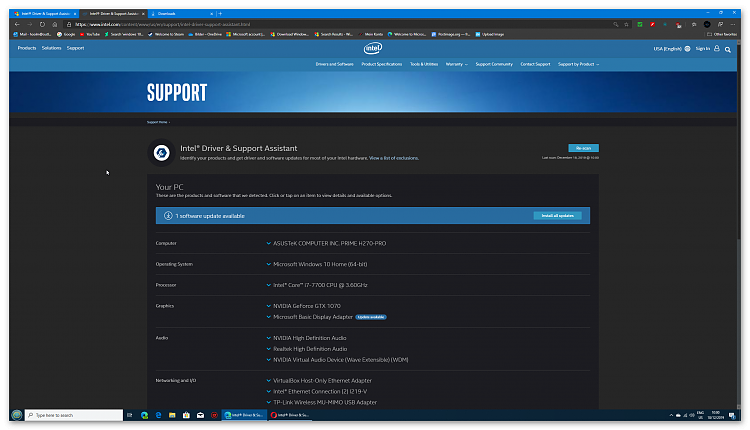

If you notice, there is not any extra information after the device ID. The same HWID is included in the generic Intel Internal Graphics Driver that is downloaded using iDSA: This is what gets assigned to the Gfx driver on Windows Update for the hardware detected. This is a 4-part HWID for a NUC with Tiger Lake internal graphics:

What happens is, Windows Update uses a Graphics driver that has a 4-part HWID assigned to the hardware manufacturer installed in the system.

This is all Windows Update that is the issue. I have the same problem on many computers, so it's clearly not an isolated case, even if it doesn't affect everyone. Note that because I'm on Starlink, I only have 1TB of unlimited data per month, which I get close to hitting, so these big display driver updates, one day by Intel, then the next day by MS, every day, are a huge waste of my bandwidth.Įven worse than that, every time there's a big update (unlike Nvidia's, which never require a restart), these demand I restart the computer every time, which is giant waste of time and completely disrupts my work.Ī) Fix the bug with Microsoft so that Windows Update stops forcing an older Intel driver to replace the new one from D&SA.ī) Provide clear steps on what users need to do about this (and it is NOT to remove and reinstall D&SA). But if the problem continues and Intel can't fix it, that will be my eventually fallback work-around. I do see that there is now an option to "hide forever" to stop D&SA for scanning the graphics drivers, while still updating networking and others, but this isn't as good, because I do want it to keep the graphics drivers up to date too, just limited to properly registered drivers that don't trigger MS to downgrade them. This is a communication failure between Intel and Microsoft, and it's Intel's responsibility to fix it and ensure that you only push WHQL drivers that are also registered with MS (like Nvidia does), or at least give us an option in D&SA to only use those drivers, in case some users want to use the bleeding edge version.

The problem is that Windows Update doesn't know that the version installed by Intel D&SA is actually an authorized, approved WHQL-certified driver. I have already tried the recommendations to reinstall D&SA, to no avail. I see multiple posts here in the forum by other users with the same problem, none of them solved. Either, I have to continually disable and manually reject each and every D&SA display adapter update (this is my current work-around) or deal with Intel updating, then let Windows Update downgrade back to an older version that night, then the next day Intel D&SA updates to the latest version, then Windows Update downgrades, etc. It's a serious bug, a major hassle, and the bane of my computing work.


 0 kommentar(er)
0 kommentar(er)
